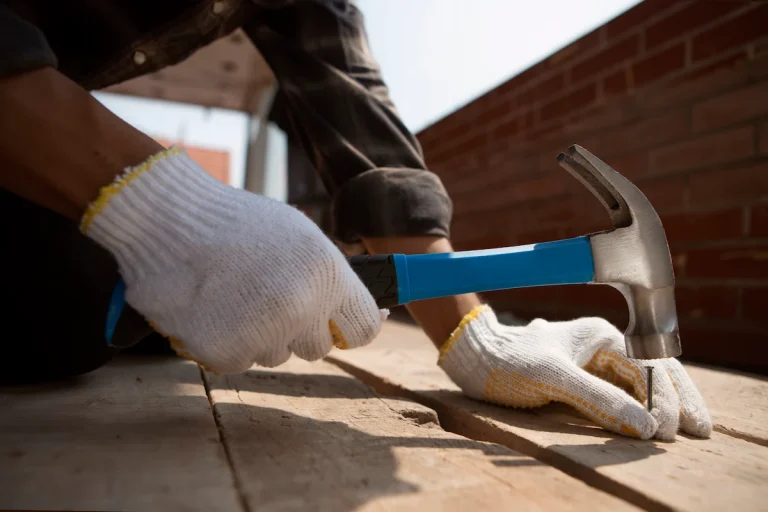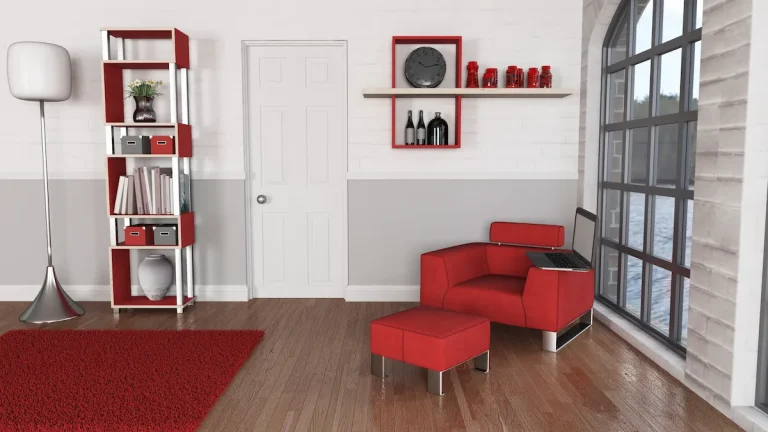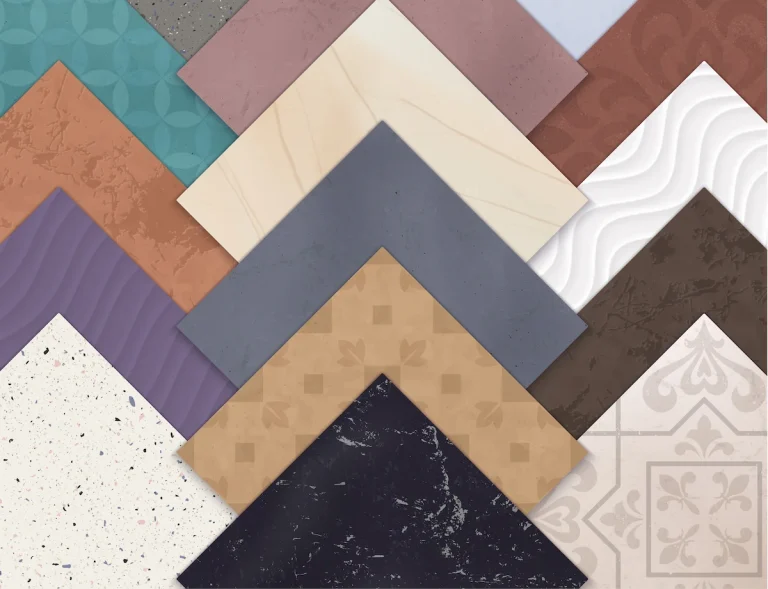Considering installing laminate flooring in your home but always wondering, how many packs of laminate do i need? Here’s a comprehensive guide breaking down the steps to calculate the number of packs required for your project.
From measuring the room and considering waste factors to understanding the factors that can affect the quantity needed, we cover it all.
We explore the different pack sizes available and provide tips on how to save money on your laminate flooring purchase. Let’s simplify the process for you!
What Is Laminate Flooring?
Laminate flooring is a popular flooring solution that replicates the look of hardwood with premium options like oak and walnut effects. It offers a cost-effective alternative to hardwood, featuring a V-groove design and easy installation with its tongue and groove structure.
This type of flooring is known for its durability and resistance to scratches, fading, and stains, making it an excellent choice for high-traffic areas and homes with pets or children. The variety of designs and textures available in laminate planks allow homeowners to achieve the desired aesthetic for their spaces, whether it’s a modern, rustic, or traditional look. Laminate flooring is compatible with different types of subfloors, providing versatility in installation options.

See product: Quick-Step Eligna Merbau
How Many Packs of Laminate Do I Need?
To determine how many packs of laminate flooring you need for your project, you must first measure the room accurately. Calculating the square footage or metres of the surface area will help you estimate the number of packs required.
Once you have the total surface area calculated, it’s important to consider the waste factor. Experts typically recommend adding an extra 10% to account for cuts, mistakes, or irregularities in the room shape.
Next, check the pack coverage of the laminate you’ve chosen. This information is usually indicated on the packaging and will help you determine how many square feet or metres each pack can cover.
After confirming the pack coverage, you can proceed to calculate the final quantity needed by dividing the total surface area by the coverage per pack. Don’t forget to account for any additional materials like insulation fibre board or beading if they are part of your laminate fitting plan.
1. Measure the Room
Before purchasing laminate flooring packs, use a Carpet and Laminate Flooring Measuring Calculator to measure the dimensions of their room accurately. Inputting the details of ‘My Project’ into the calculator helps in getting precise measurements.
Start by selecting the type of room you are measuring in the calculator. Then, carefully measure the length and width of your room using a tape measure. It’s essential to measure at different points in the room to account for any irregularities in the walls. Once you have the measurements, input those numbers into the calculator to get the total area. This accuracy is crucial when purchasing laminate products as it ensures you buy the correct amount without excess material or running short.
2. Calculate the Square Footage
Calculate the square footage by multiplying the length and width of the room. For rooms with irregular shapes, divide the area into smaller sections and calculate the square footage of each section before adding them together.
When measuring the length and width of a rectangular or square room, ensure to use the longest and widest points to get accurate measurements.
For rooms with multiple sections or alcoves, treat each separately as a smaller square footage calculation, and then sum them up for the total area.
In the case of triangular rooms, multiply the base by the height and halve the result to determine the square footage.
3. Consider Waste Factor
When estimating the number of laminate flooring packs needed, include a waste factor of around 5-10% to account for cutting errors, damaged planks during installation, or future repairs.
By factoring in this waste percentage, you ensure that you have enough material to cover unexpected mishaps that commonly occur during flooring projects. Instances like uneven walls requiring custom cuts, or unforeseen damages during transportation, can all be managed with this additional margin.
Having surplus laminate flooring can be advantageous for future touch-ups and repairs without worrying about colour or pattern discontinuity. It creates a sense of security and flexibility in your flooring investment, ensuring its longevity and overall aesthetic appeal.
4. Check the Pack Coverage
Before purchasing laminate packs, check the coverage provided by each pack. Some packs may cover a specific square footage, while others might have different dimensions. Ensure that the total coverage aligns with your calculated square footage to avoid shortages.
One crucial aspect to consider is the compatibility of the laminate planks with the square footage you need to cover. Verifying this information is essential for a seamless and successful installation process.
To determine the adequate amount of packs required, simply divide your total square footage by the coverage provided in each pack. This will give you a clear picture of how many packs you need to purchase.
Be mindful of any additional areas that may need coverage, such as closets or small nooks, to ensure you have enough laminate planks to complete your project.
By double-checking these details, you can confidently proceed with your laminate flooring installation knowing you have the correct amount of material.
5. Determine the Number of Packs Needed
Summarise the calculations of square footage, waste factor, and pack coverage to determine the final number of laminate packs needed for the project. Ensure to consider the room area and the type of laminate wood floors chosen for accurate estimation.
When consolidating the room dimensions, start by measuring the length and width of the room to calculate the total area in square feet. This forms the foundation for determining how many packs of laminate flooring will be required. Keep in mind the waste factor, which typically ranges from 5% to 10% to account for cutting and fitting. Considering the waste factor ensures that you have enough material to cover unexpected needs.
Next, refer to the pack coverage information provided by the manufacturer, which specifies how much area each pack can cover. Divide the total room area by the coverage per pack to ascertain the number of packs needed. It’s essential to factor in the room area accurately to avoid underestimating or overestimating the required quantity.
The Factors That Affect the Number of Packs Needed
If you are wondering, how many packs of laminate will I need? Actually, there are several factors that influence the number of laminate packs needed for a flooring project. These include room shape and layout, the size of laminate planks chosen, the thickness of underlayment, potential cutting and installation errors, and the inclusion of extra packs for future repairs.
a. Room Shape and Layout
The shape and layout of a room significantly affect the number of laminate packs needed. Rooms with irregular shapes or intricate layouts may require more precise measurements and additional material for accurate fitting.
When dealing with irregular room configurations, installers must carefully assess each area to ensure proper coverage and alignment. The challenge lies in accurately cutting and fitting laminate pieces around corners or non-standard angles.
Laminate fitting in such scenarios demands attention to detail to maintain a professional finish. Considering the subfloor is crucial as well, as it can impact the overall stability and longevity of the laminate flooring. Proper subfloor preparation can prevent issues like squeaks and uneven surfaces, ensuring a seamless installation process.
b. Laminate Plank Size
The size and design of laminate planks play a crucial role in determining the number of packs needed. Planks with a V-groove design may require specific calculations to ensure proper coverage and alignment during installation.
Laminate plank size and design are key factors in accurately estimating the amount of material required for a flooring project.
Larger plank sizes can cover more area with fewer planks, reducing the number of packs needed.
V-groove designs add sophistication to the overall appearance of the flooring, but they also influence the installation process. The V-groove feature requires precise calculations to account for pattern alignment and minimise wastage.

See product: Elka 8mm V-Groove Walnut Oak
c. Underlayment Thickness
The thickness of the underlayment, such as an insulation fibre board, can affect the overall height of the flooring, underfoot comfort, and thermal insulation. Consider the underlayment’s properties when calculating the number of laminate packs needed.
In terms of the installation process, a thicker underlayment provides better cushioning underfoot, creating a more comfortable surface to walk or stand on. This added padding can also help level minor imperfections in the subfloor, resulting in a smoother finished look for the flooring.
The thickness of the underlayment plays a crucial role in thermal insulation. Thicker underlayments offer enhanced insulation properties, helping to retain heat in the room and reduce energy costs. This is particularly beneficial in colder climates where maintaining a warm indoor environment is essential.
d. Cutting and Installation Errors
Potential errors in cutting or installation can significantly impact the number of laminate packs required for a project. When cutting laminate flooring, inaccuracies can arise due to improper measurement or cutting techniques. Even minor errors in cutting can result in pieces that are too small to use effectively, leading to wastage. Additionally, if cuts are not made precisely, they can create gaps between pieces during installation, necessitating extra material to fill these gaps.
Inadequate preparation or planning during installation can also contribute to a higher demand for additional packs. Poor surface preparation, such as failing to level the subfloor or neglecting to acclimate the laminate to the environment, can result in uneven installation or warping of the flooring over time. This may require the replacement of sections of the floor, leading to the need for extra laminate packs to complete the project.
Furthermore, errors in installation techniques can result in damage to the laminate pieces themselves. For example, improper handling or installation methods may cause chipping, cracking, or scratching of the laminate surface. In such cases, additional packs would be required to replace damaged pieces, increasing the overall quantity needed for the project.
Moreover, insufficient expertise or experience on the part of the installer can contribute to errors that impact the number of laminate packs needed. Inexperienced installers may struggle with aligning pieces properly, achieving tight seams, or ensuring consistent spacing between planks. These issues can lead to a higher rate of material wastage and the need for extra packs to compensate for mistakes made during the installation process.
e. Extra Packs for Future Repairs
It’s advisable to purchase extra packs of laminate flooring to account for future repairs or replacements. Proper disposal of old materials and efficient laminate fitting can prolong the lifespan of the flooring, reducing the need for extensive repairs in the long run.
By ensuring you have additional packs, you can seamlessly address any unexpected damages that may occur over time, maintaining the aesthetic appeal of your space without facing delays or colour discrepancies.
Furthermore, disposing of old materials responsibly not only benefits the environment but also clears the way for a successful installation of the new laminate flooring.
Accurate laminate fitting is crucial for the overall durability and structural integrity of the floor, preventing issues like warping or gaps that can compromise its longevity and appearance.
Therefore, taking these precautionary measures ensures that your investment in laminate flooring pays off in the long term.
The Different Pack Sizes Available for Laminate Flooring
Laminate flooring packs are available in various sizes to accommodate different room dimensions and installation requirements. Manufacturers offer a range of pack sizes to suit the needs of consumers seeking specific quantities for their projects.
Depending on the brand and type of laminate products, pack sizes can vary significantly. Some companies provide small packs ideal for small spaces or patch-up jobs, while others offer bulk packs suitable for covering larger areas or entire rooms. This diversity in pack sizes gives customers the flexibility to choose according to their specific project requirements, making it easier to manage costs and reduce wastage.
How to Save Money on Laminate Flooring
When planning your laminate flooring purchase, it’s essential to assess the layout of the room to determine the most cost-effective approach. For rectangular rooms, linear layouts often minimise waste, while diagonal patterns can add visual interest, albeit with slightly more material needed. Optimising the use of off-cuts and leftovers for smaller sections or cupboards can further stretch your budget. Selecting laminate thickness based on traffic levels in different areas of your home can offer savings without compromising quality.
a. Buy in Bulk
Purchasing laminate flooring in bulk quantities can lead to cost savings, especially when opting for premium options or considering additional features like compatibility with underfloor heating systems. Bulk purchases often come with discounted rates per square foot or metre, making it a cost-effective choice.
Besides the financial benefits, buying laminate flooring in bulk provides convenience and ensures that you have sufficient materials for multiple rooms or larger projects. This eliminates the need to make frequent trips to the shop and reduces the chances of colour or style variations between batches. Purchasing in bulk allows for better negotiation power and customisation options, such as selecting specific textures, finishes, or thicknesses to suit your preferences.
b. Consider Clearance or Sale Items
Exploring clearance or sale sections for laminate flooring can yield significant discounts on high-quality products. Utilising vouchers or promotional offers available from retailers can further reduce the overall cost of the flooring materials.
By taking advantage of these deals, consumers can save a substantial amount of money without compromising on the quality of the flooring. Discounts from clearance sales and promotions offer a cost-efficient solution for those looking to renovate their space on a budget. Combining these discounts with vouchers can lead to even greater savings, allowing individuals to achieve the desired aesthetic for their home at a fraction of the original price.
c. Shop during Off-Season
Timing plays a crucial role in saving money on laminate flooring. Shopping during off-season periods or quieter demand times can result in lower prices and discounts on various flooring solutions. This strategic approach can help reduce overall flooring costs significantly.
When opting for laminate flooring, keeping an eye out for discounts and special promotions during off-peak seasons could lead to substantial savings. Manufacturers and retailers often introduce competitive pricing to attract customers when demand is lower, translating into budget-friendly deals for buyers. By taking advantage of these cost-saving opportunities, individuals can achieve a stylish and durable flooring solution for their homes, all while staying within their budget constraints.
d. Check for Discounts or Coupons
Before finalising a laminate flooring purchase, always check for discounts or coupons offered by retailers. Utilising such promotions can lead to substantial savings on both the material cost and additional expenses related to laminate fitting and installation.
These discounts and coupons can make a significant difference in the overall expenses involved in revamping your living space with laminate flooring. By exploring discount opportunities, homeowners can not only save money on the laminate material itself but also reduce the costs associated with the skilled labour required for proper installation. This proactive approach ensures that you get the best value for your investment while enjoying a beautifully upgraded living area.
Saving money on laminate flooring is possible by exploring cost-effective options from retailers like TEKA Flooring. Considering the room area, size, and shape can help optimise material usage and reduce overall expenses.
TEKA Flooring offers a wide range of laminate flooring options, all with excellent quality and affordable prices, such as Elka 8mm V-Groove Driftwood Oak, which is on sale from £20.02 to £17.02 per m².
If you are still unsure about how many packs of laminate you need, you can book an appointment to consult with our experts. Our team of specialists is ready to help you discover the ideal flooring option customised to your requirements. Enjoy exceptional customer service, affordable prices, and superior quality.
Read also:

































